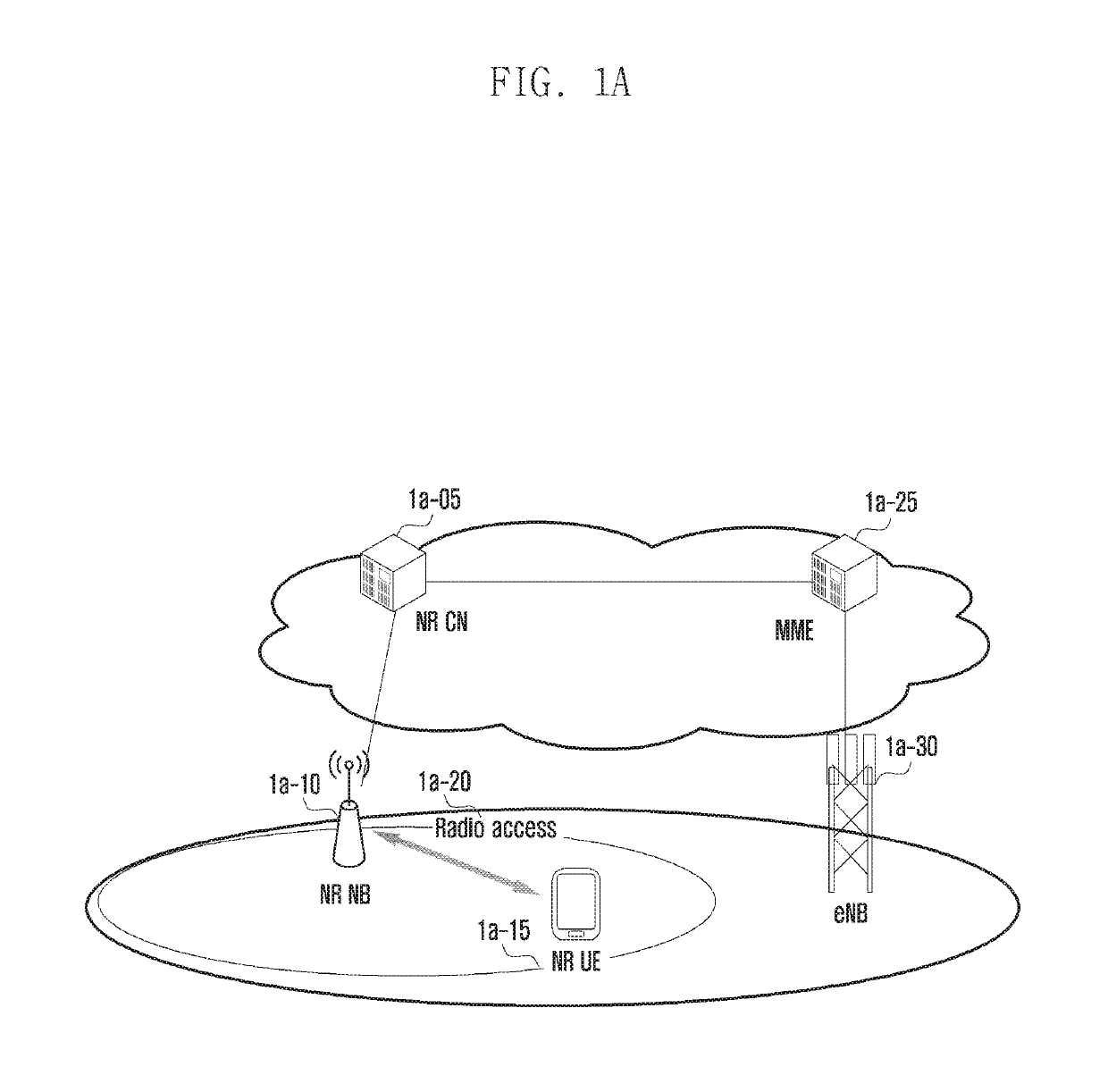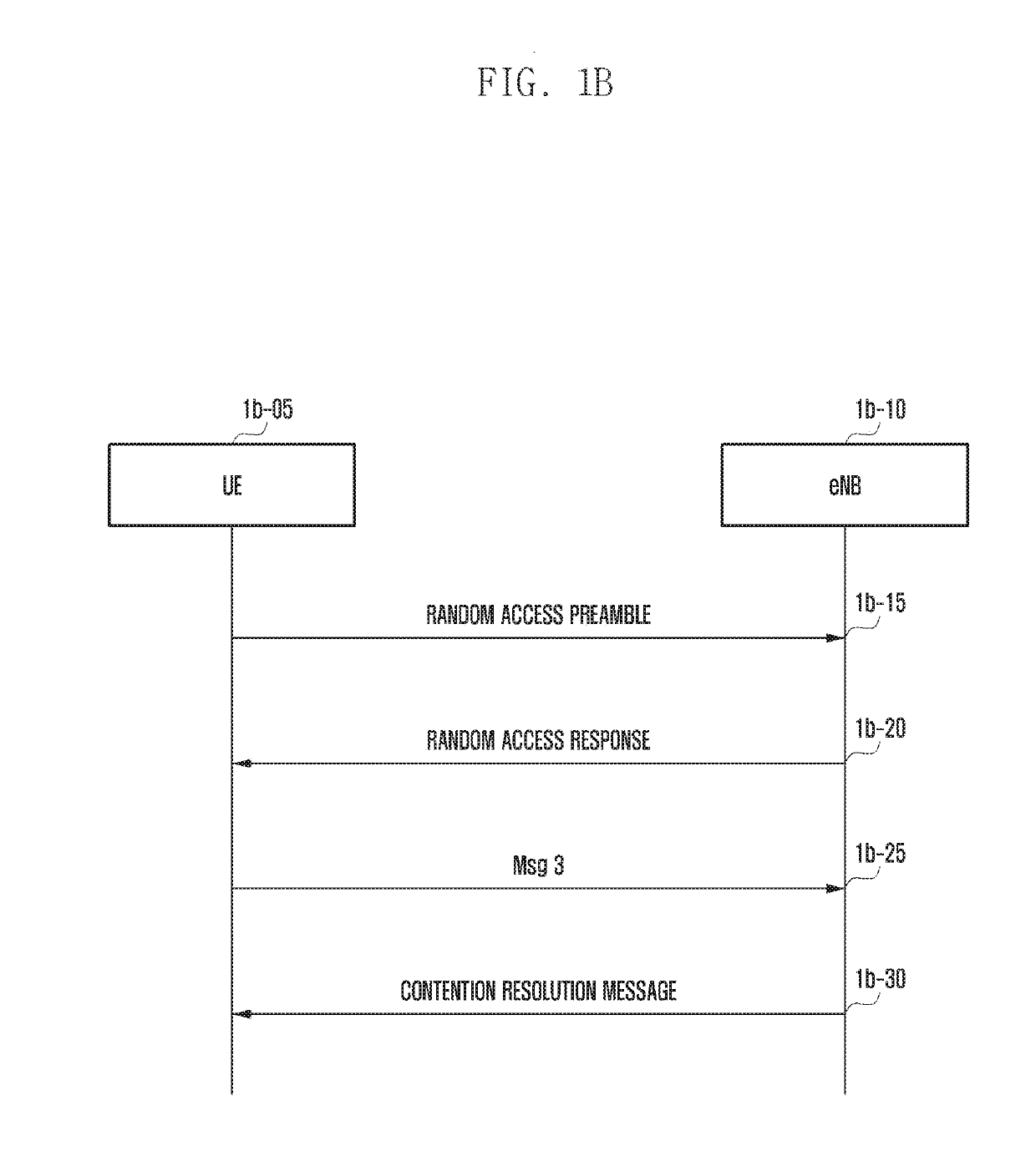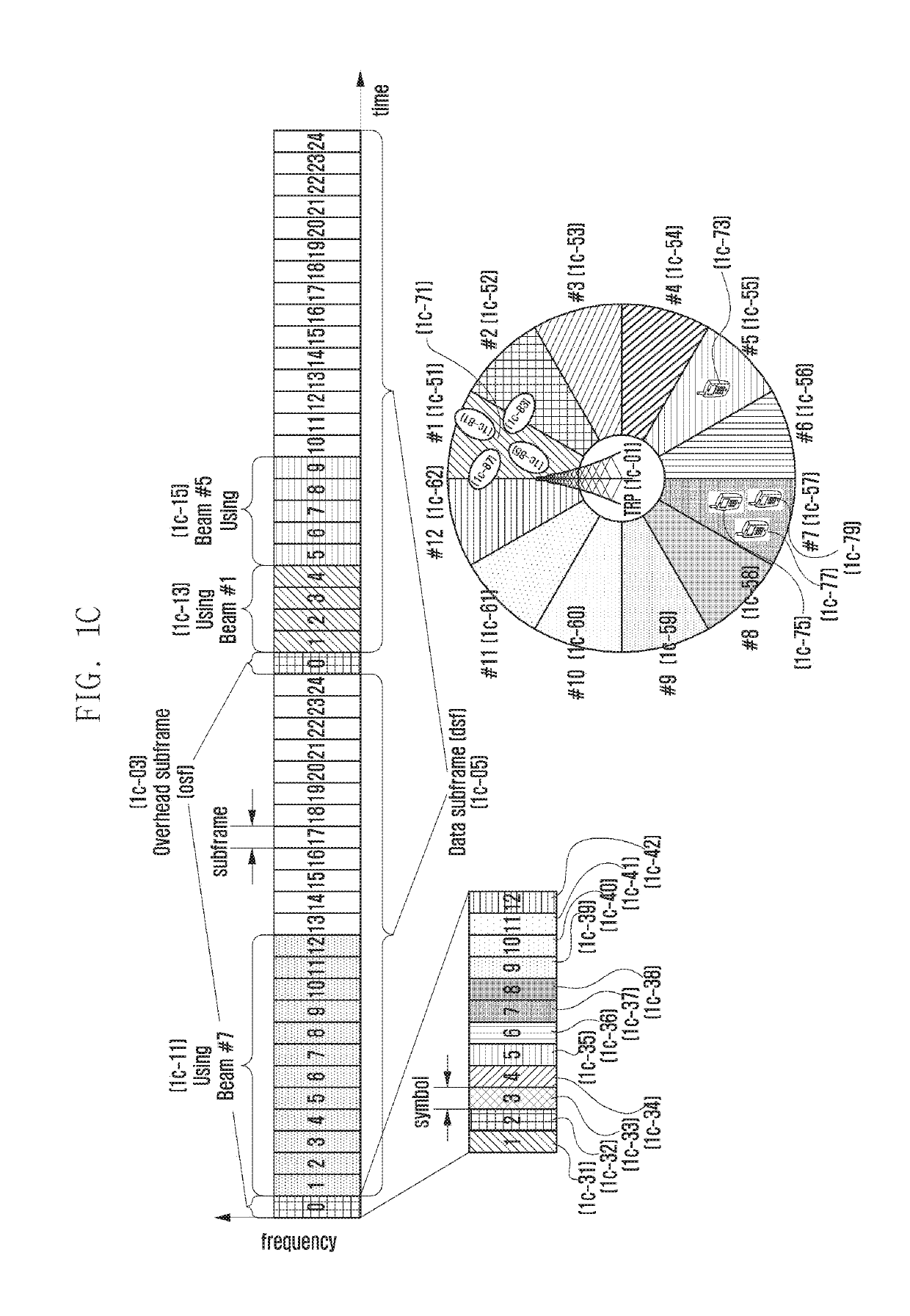Method and apparatus for performing random access in wireless communication system supporting beamforming
a wireless communication system and random access technology, applied in the direction of electrical equipment, radio transmission, transmission, etc., can solve the problem that the directional beam-based transmission cannot transmit or receive a signal, and achieve the effect of reducing unnecessary overhead, simple procedure, and increasing transmission rang
- Summary
- Abstract
- Description
- Claims
- Application Information
AI Technical Summary
Benefits of technology
Problems solved by technology
Method used
Image
Examples
first embodiment
[0066]In describing the present disclosure below, a detailed description of related known configurations or functions incorporated herein will be omitted when it is determined that the detailed description thereof may unnecessarily obscure the subject matter of the present disclosure. Hereinafter, embodiments of the present disclosure will be described with reference to the accompanying drawings.
[0067]FIG. 1A illustrates the structure of a next-generation mobile communication system.
[0068]Referring to FIG. 1A, a radio access network of the next-generation mobile communication system includes a new radio Node B (hereinafter, “NR NB”) 1a-10 and a new radio core network (NR CN) 1a-05. A new radio user equipment (hereinafter, “NR UE” or “UE”) 1a-15 accesses an external network through the NR NB 1a-10 and the NR CN 1a-05.
[0069]In FIG. 1A, the NR NB 1a-10 corresponds to an evolved Node B (eNB) of an existing LTE system. The NR NB is connected to the NR UE 1a-15 via a radio channel and may...
embodiment 2
[0199]FIG. 3A illustrates the structure of a next-generation mobile communication system according to the present disclosure.
[0200]Referring to FIG. 3A, a cell served by an NR Node B (NR NB) 3a-05 operating on the basis of a beam may include a plurality of transmission reception points (TRPs) 3a-10, 3a-15, 3a-20, 3a-25, 3a-30, 3a-35, and 3a-40.
[0201]The TRPs 3a-10 to 3a-40 are blocks resulting from the separation of only a function of transmitting and receiving a physical signal from an existing LTE base station (eNB) and may include a plurality of antennas. Particularly, the TRPs 3a-10 to 3a-40 may perform beamforming by generating beams in different directions using a plurality of transmission and reception antennas and may also be referred to as a beam group (BG).
[0202]A UE 3a-50 accesses the NR NB 3a-05 and an external network through the TRPs 3a-10 to 3a-40. To serve traffic for users, the NR NB 3a-05 performs scheduling by collecting state information on UEs, such as a buffer ...
third embodiment
[0286]FIG. 4A illustrates the structure of an LTE system for reference to describe the present disclosure.
[0287]Referring to FIG. 4A, the wireless communication system includes a plurality of base stations 4a-05, 4a-10, 4a-15, and 4a-20, a mobility management entity (MME) 4a-25, and a serving-gateway (S-GW) 4a-30. A user equipment (hereinafter, “UE” or “terminal”) 4a-35 is connected to an external network through the base stations 4a-05, 4a-10, 4a-15, and 4a-20 and the S-GW 4a-30.
[0288]The base stations 4a-05, 4a-10, 4a-15, and 4a-20 are access nodes of a cellular network and provide wireless connection for UEs connected to the network. That is, in order to serve traffic of users, the base stations 4a-05, 4a-10, 4a-15, and 4a-20 performs scheduling by collecting state information on UEs, such as a buffer state, an available transmission power state, and a channel state and supports connection between the UEs and a core network (CN).
[0289]The MME 4a-25 is a device that performs not o...
PUM
 Login to View More
Login to View More Abstract
Description
Claims
Application Information
 Login to View More
Login to View More - R&D
- Intellectual Property
- Life Sciences
- Materials
- Tech Scout
- Unparalleled Data Quality
- Higher Quality Content
- 60% Fewer Hallucinations
Browse by: Latest US Patents, China's latest patents, Technical Efficacy Thesaurus, Application Domain, Technology Topic, Popular Technical Reports.
© 2025 PatSnap. All rights reserved.Legal|Privacy policy|Modern Slavery Act Transparency Statement|Sitemap|About US| Contact US: help@patsnap.com



